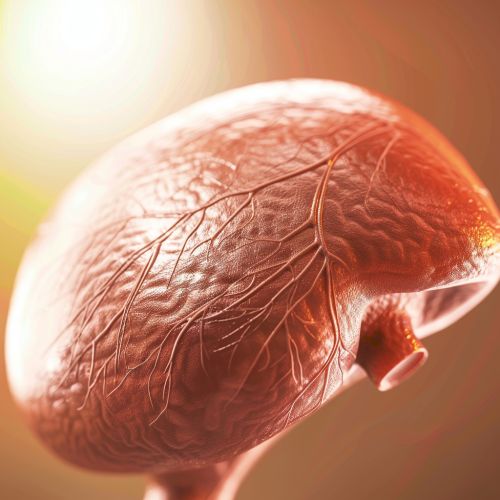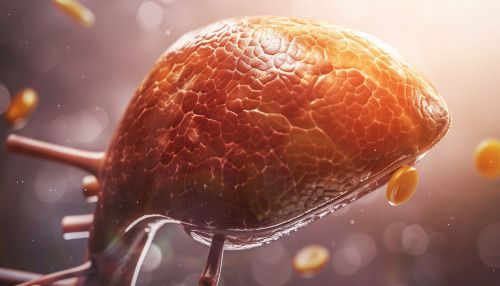Liver Disease
Overview
Liver disease refers to any disturbance of liver function that causes illness. The liver is responsible for many critical functions within the body, and if it becomes diseased or injured, the loss of those functions can cause significant damage to the body. Liver disease is also referred to as hepatic diseaseHepatic Disease.
Anatomy of the Liver
The liver is a large, meaty organ that sits on the right side of the belly. Weighing about 1.44 kilograms in an adult, it is the heaviest organ in the body. It is reddish-brown in color and feels rubbery to the touch. The liver is divided into two large sections, called the right and the left lobes. The gallbladder sits under the liver, along with parts of the pancreas and intestines. The liver and these organs work together to digest, absorb, and process food.


Functions of the Liver
The liver's main job is to filter the blood coming from the digestive tract, before passing it to the rest of the body. The liver also detoxifies chemicals and metabolizes drugs. As it does so, the liver secretes bile that ends up back in the intestines. The liver also makes proteins important for blood clotting and other functions.
Types of Liver Disease
Liver disease can occur through several mechanisms. A common cause of liver disease is viral infection. Viral hepatitides such as Hepatitis B virus and Hepatitis C virus can be vertically transmitted during birth from mother to child. Infections of the liver with Hepatitis A virus and Hepatitis E virus typically occur through ingestion of contaminated food or water.
Alcohol abuse is a common cause of liver disease in the Western world. So too is non-alcoholic fatty liver disease (NAFLD), which is a consequence of obesity and diabetes. Some diseases of the liver are caused by genetic factors such as Wilson's disease and hemochromatosis.
Liver disease can also be caused by drugs, poisons, or an abnormal immune response. Examples of types of liver disease include cirrhosis, liver cancer, liver failure, Hepatitis A, B, C, D, and E, and liver disease related to alcohol and drugs.
Symptoms of Liver Disease
Symptoms of liver disease can vary, but they often include swelling of the abdomen and legs, bruising easily, changes in the color of stool and urine, and jaundice, or yellowing of the skin and eyes. Other symptoms include itching, loss of appetite, and chronic fatigue.
Diagnosis of Liver Disease
Liver disease can be diagnosed with a variety of blood tests, imaging studies, and sometimes a liver biopsy. Blood tests can reveal abnormal liver enzymes, bilirubin, and prothrombin time. Imaging studies such as ultrasound, CT scan, and MRI can show liver damage. A liver biopsy can confirm the diagnosis of many liver diseases and can determine the severity of cirrhosis or inflammation.
Treatment of Liver Disease
Treatment of liver disease depends on the specific type of disease. Some diseases can be managed by lifestyle changes such as stopping alcohol consumption, losing weight, or taking certain medications. Other diseases may require surgical intervention or liver transplantation.
Prevention of Liver Disease
Prevention of liver disease involves understanding the risk factors and taking steps to reduce those risks. This can include getting vaccinated against hepatitis A and B, practicing safe sex, avoiding risky behaviors such as illicit drug use or unregulated tattoo parlors, and not sharing personal items that may have come into contact with another person's blood.
